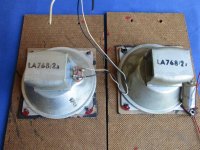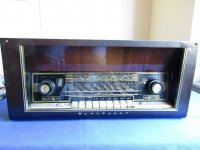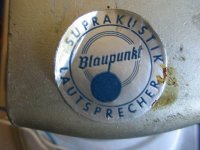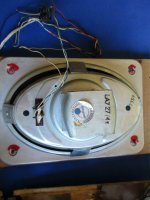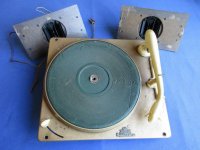Here's an alternative approach to providing acoustic resistance in order to lower the Q of a sealed enclosure.
Aperiodic Enclosures - Great Sound Stereo Speaker Manual
Aperiodic is the way I would like to go, a simple leaky closed box where I can potentially add stuffing to the "vent" (hole) to play around with the q.
What you recommended might be in line with original designs from back in the day but it sounds like to many holes and it probably won't be aesthetically pleasing.
With aperiodic at least the hole will be small but the size of the box will need to maintain a significantly large size or just be as large possible so closer to 90 litres I would say.
But with the new VAS im getting even larger box volume which is really ridiculous. So somewhere between 60 and 90 litres will have to suffice.
Adding a mid driver would be a needless complication in this case.
As Moondog55 says, the bass/mid driver does not suddenly cut off at 2,000Hz but will roll off slowly while the tweeter slowly rolls in. The combined output of the two drivers will ensure there is no gap in the frequency coverage.
It may be useful for you to know that midrange is defined as the range of frequencies from 500Hz to 2kHz. So, you see, the ARN 38 as already covering the midrange.
Makes total sense. I was just thinking what happens if the tweeter can't play till 2000hz but I'm hoping it will well with the roll off you mention it should not leave a gap.
A major advantage of aperiodic loading is that it allows an enclosure of smaller volume to be substituted for a larger sealed box.Aperiodic is the way I would like to go ... But with the new VAS im getting even larger box volume which is really ridiculous. So somewhere between 60 and 90 litres will have to suffice.
For example, your 90 litre sealed enclosure could usefully be replaced by a 60 litre aperiodic enclosure.
The LA768/2z tweeters in the attached images come out of a Blaupunkt radio.Any chance you can find the tweeter driver somewhere?🙂 Lol!!
It may be that Isophon was the original equipment manufacturer.
Sorry, but I've found no specs!
Attachments
Makes total sense. I was just thinking what happens if the tweeter can't play till 2000hz but I'm hoping it will well with the roll off you mention it should not leave a gap.
The tweeter probably has an Fs around 700/900 Hz, using it above 2k should be no problem with a cap in front, and simply use the original cap value +/- 10%
The LA768/2z tweeters in the attached images come out of a Blaupunkt radio.
It may be that Isophon was the original equipment manufacturer.
Sorry, but I've found no specs!
Good work Galu!

I would expect them to be a little more sensitive than the rubber-surrounded woofers.
If that was "the" speaker in a table radio, then as Moondog55 said, it should reach down to a 10" woofer without fuss. The foreboding question is... what does the owner expect of these drivers?
The radio, or radiogram, also employed the elliptical speaker shown in the first attachment. The record deck and 'tweeters' are shown in the second attachment. See the first link below for the full set of images.If that was "the" speaker in a table radio, then as Moondog55 said, it should reach down to a 10" woofer without fuss.
Interesting to see that the 'tweeters' had what looks like an acoustic lens in front of them, also illustrated in the second link below.
Blaupunkt Radio und Plattenspieler aus Phonomobel 50er Jahre in Hessen - Rodermark | eBay Kleinanzeigen
Blaupunkt LA768 音響レンズ付/音響レンズ+ホーンダクト付 入荷!
Attachments
OK, I'm with you- not a table radio.
Your second link shows a similar lens, neat. I don't recognize a manufacturers code on any of the pictures.
Your second link shows a similar lens, neat. I don't recognize a manufacturers code on any of the pictures.
A major advantage of aperiodic loading is that it allows an enclosure of smaller volume to be substituted for a larger sealed box.
For example, your 90 litre sealed enclosure could usefully be replaced by a 60 litre aperiodic enclosure.
Yeh but a bit of box modelling is leading me to 228 litre volume at .707 qtc.
So hence why I going to try aim for the larger 90 litre enclosure.
Good work Galu!
I would expect them to be a little more sensitive than the rubber-surrounded woofers.
If that was "the" speaker in a table radio, then as Moondog55 said, it should reach down to a 10" woofer without fuss. The foreboding question is... what does the owner expect of these drivers?
When you say "what does the owner expect from these drivers?" are you implying that not much can be had from them?
The LA768/2z tweeters in the attached images come out of a Blaupunkt radio.
It may be that Isophon was the original equipment manufacturer.
Sorry, but I've found no specs!
My DATs is giving me a Fs of around 1300hz.
Nice find...
Just to make sure regarding using cardboard box for a mock up. Cause I am lost to how we are going to get an accurate low frequency roll off measurement from a cardboard box? Or do we rely on box modelling for that and just stick to the volume we chose from the get go?
I mean a mock up will give me an idea of the frequency ranges and how they meet and understand more about their roll offs plus I can even set it with the crossover.
Anything else I am looking for?
I mean a mock up will give me an idea of the frequency ranges and how they meet and understand more about their roll offs plus I can even set it with the crossover.
Anything else I am looking for?
The tweeters are Isophon "Biegewellenwandler". There should be a brass screw in the center locking the cone to the pole piece.
A cardboard box is good enough. Try different width of baffle.
Also measure the roll off of your drivers (it might be the 2k found on the other site, it might not....) and try taking that as your crossover frequency, let the woofer roll off on it's own and bring in the tweeter with a single cap as suggested.
Moving on to a 1st order low pass on the woofer and second order on the tweeter is worth a test. With these kinds of drivers on open baffles I always had good outcomes.
A cardboard box is good enough. Try different width of baffle.
Also measure the roll off of your drivers (it might be the 2k found on the other site, it might not....) and try taking that as your crossover frequency, let the woofer roll off on it's own and bring in the tweeter with a single cap as suggested.
Moving on to a 1st order low pass on the woofer and second order on the tweeter is worth a test. With these kinds of drivers on open baffles I always had good outcomes.
The tweeters are Isophon "Biegewellenwandler". There should be a brass screw in the center locking the cone to the pole piece.
A cardboard box is good enough. Try different width of baffle.
Also measure the roll off of your drivers (it might be the 2k found on the other site, it might not....) and try taking that as your crossover frequency, let the woofer roll off on it's own and bring in the tweeter with a single cap as suggested.
Moving on to a 1st order low pass on the woofer and second order on the tweeter is worth a test. With these kinds of drivers on open baffles I always had good outcomes.
I recommend collecting cardboard boxes and scrap wood from dumpsters and sidewalks and build an opple baffle (start with a width 2.4 times driver diameter and see what changes with more or less width) and then start closing that open baffle to an open back cabinet and then close back in steps. With cardboard and scrap wood it's fast and easy to do, it's educational and fun.
And don't forget to measure along the way and include descriptions of what you just measured in the files...
I recommend collecting cardboard boxes and scrap wood from dumpsters and sidewalks and build an opple baffle (start with a width 2.4 times driver diameter and see what changes with more or less width) and then start closing that open baffle to an open back cabinet and then close back in steps. With cardboard and scrap wood it's fast and easy to do, it's educational and fun.
I am deliberating on your recommendation on the mock up. And slowly starting to understand the concept.
What I understand is that your not recommending a specific design per se but suggesting how I can measure the mock up with different design considerations piece by piece.
Starting with open baffle then closing of the sides and ending up with a closed box and then deciding whats best. I will probably choose a size closer to 80 or 90 litres and do what you suggest that way the final box will be a closed enclosure with a aperiodic design(and closed) at about 90 litres.
The only problem is I am not sure what I am looking for in the open baffle design or the open back design I need to look into it a little more. But if its just the Frequency curve that I know. The concepts with QTC in a closed box or aperiodic is something I understand. What I mean is that I don't truly understand open baffle....
Last edited:
I know a man who does: http://www.hi-fiworld.co.uk/loudspe...udspeakers-open-baffles-and-bass-part-15.htmlWhat I mean is that I don't truly understand open baffle....
Great! Thanks, I take a look...
- Home
- Loudspeakers
- Multi-Way
- Old Vintage Tweeter Driver can't get VAS
